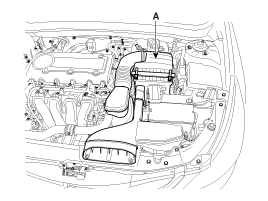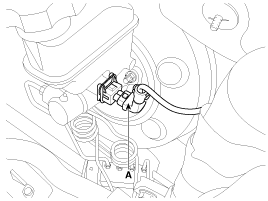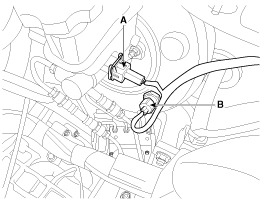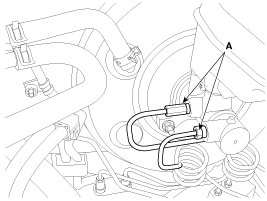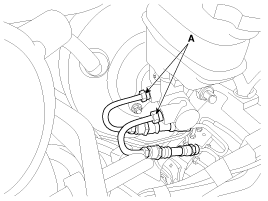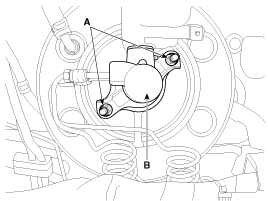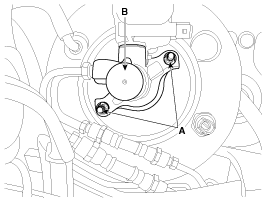 Hyundai Sonata: Master Cylinder. Repair procedures
Hyundai Sonata: Master Cylinder. Repair procedures
Removal
| 1. |
Turm ignition switch OFF and disconnect the negative (-) battery
cable.
|
| 2. |
Remove the air cleaner assembly (A).
|
| 3. |
Disconnect the brake fluid level switch connector (A), and vacuum
switch connector (B).
[2.4 GDI]
[2.0 T-GDI]
|
| 4. |
Remove the brake fluid from the master cylinder reservoir with
a syringe.
|
| 5. |
Disconnect the brake tube (A) from the master cylinder by loosening
the tube flare nut.
[2.4 GDI]
[2.0 T-GDI]
|
| 6. |
Remove the master cylinder (B) from the brake booster after loosening
the mounting nuts (A).
[2.4 GDI]
[2.0 T-GDI]
|
Installation
| 1. |
Installation is the reverse of removal.
|
| 2. |
After installation, bleed the (Refer to Brake system bleeding)
|
 Master Cylinder. Components and Components Location
Master Cylinder. Components and Components Location
Components
1. Reservoir cap
2. Reservoir
3. Grommet
4. Master cylinder
...
 Brake Line. Components and Components Location
Brake Line. Components and Components Location
Components
...
See also:
For best battery service
Keep the battery securely mounted.
Keep the battery top clean and dry.
Keep the terminals and connections clean, tight, and coated with petroleum
jelly or terminal grease.
Rinse any sp ...
Rear Wheel Speed Sensor. Repair procedures
Removal
1.
Remove the rear wheel and tire.
Tightening torque:
88.3 ~ 107.9 N.m (9.0 ~ 11.0 kgf.m, 65.1 ~ 79.6 lb-ft)
...
Engine compartment
■ 2.4 GDI
1. Engine coolant reservoir
2. Engine oil filler cap
3. Brake fluid reservoir
4. Air cleaner
5. Fuse box
6. Positive battery terminal
7. Negative battery terminal
8. Windshie ...

